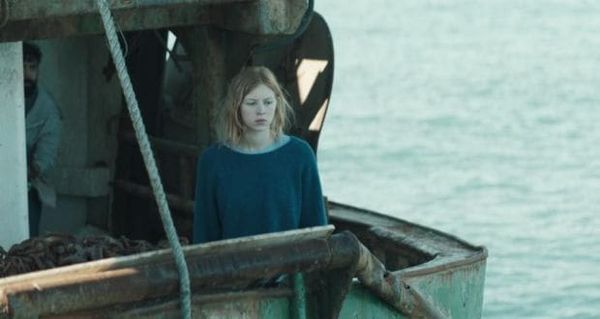In these cautious, locked-down times, Sea Fever may be as close as we get to a Saturday-night blockbuster: a medium-to-low budget Irish-Scottish-Swedish-Belgian co-production, directed by a TV graduate, which pulls into port bearing a credit scroll that concludes "with Dougray Scott and Connie Nielsen". (As ever, you wonder how many fraught transoceanic phone calls were necessary to arrive at that particular designation.) In all other respects, it has the look of one of those self-contained calling-card movies filmmakers assemble to get at the big bucks that might fund their wilder dreams; it's just occasional widescreen exteriors of a rusting fishing vessel adrift on the wide blue yonder, and sporadic bouts of life-or-death action gesture towards a scope beyond most titles being released at a moment when home entertainment is the only entertainment we have. At its centre is a germ of an idea that has sustained the DTV and VOD markets over the past forty years, for this is essentially Alien on the high seas: it strands a socially inept yet resourceful marine biologist (Hermione Corfield) on that boat with varyingly salty shipmates - captained by husband-and-wife team Scott and Nielsen - and then subjects everybody to a parasitic lifeform that eats away at them from within. You could cavil at the opportunism involved in releasing a film plotted thus at this precise point in human evolution, or shrug and accept this is what B-movie producers have done since year dot in their efforts to turn a buck.
As Alien ripoffs go, Sea Fever is neither the best nor worst to have bobbed up in front of us: it sees writer-director Neasa Hardiman - who's done enough notable TV these past few years (Happy Valley over here, Jessica Jones over there) to suggest she might well have a career for herself - doing her level best with the kind of inherently hackneyed material producers and distributors feel confident about selling. You'll have to wait half the running time for the bug to get into this crew's systems, but it generates a couple of effectively grisly deaths, and a semi-intriguing debate - bound to be seized on by over-excitable critics who'll proclaim Sea Fever the film of the hour - about whether the ship should return to shore (so as to seek medical assistance) or enter into quarantine so as to prevent the parasite from spreading. Against that, it's clear from a very early stage (perhaps even as early as those credits) that Hardiman doesn't have the money in the coffers to depict a full societal breakdown; there's not all that much resistance on board, given the thin-to-diaphanous characterisation; and there's a fair bit of poking around in darkened hulls to cover the fact the budget is running out. (Far better lit: the product-placement for an indigenous brand of lager, whose cans are all miraculously positioned with their logos facing the camera.) String theory adherents will be aware there is a timeline where we're all currently happy and healthy and engaged in enthusiastic conversation (in person, at close quarters) about the new Bond movie. Everyone from director and cast to the distributor is giving Sea Fever the old college try, but having Dougray Scott set upon by nefarious bacteria for our viewing pleasure does seem rather like giving a starving dog a rubber bone.
Sea Fever is available to stream from Friday.

No comments:
Post a Comment